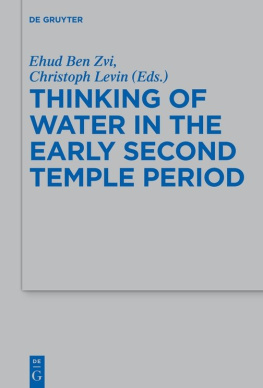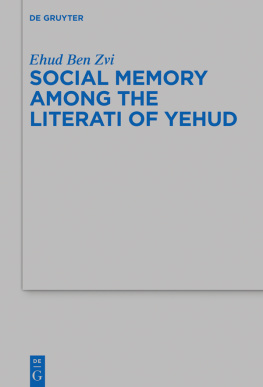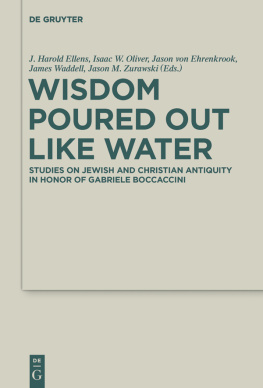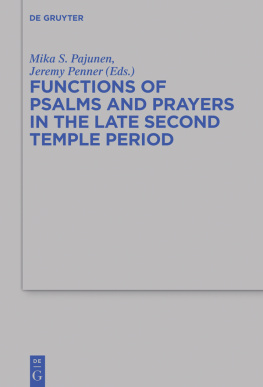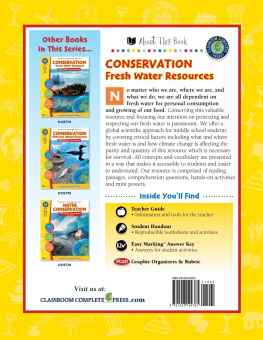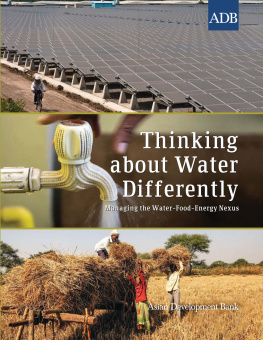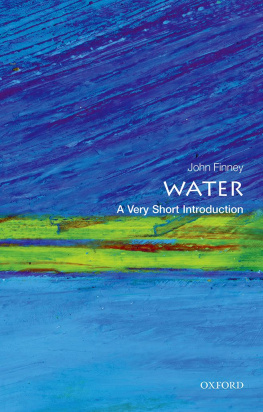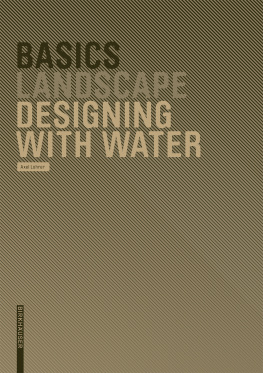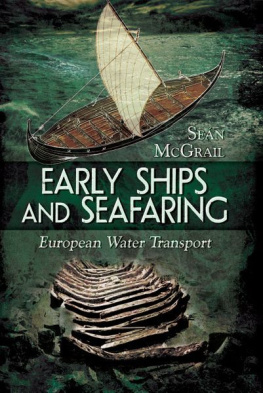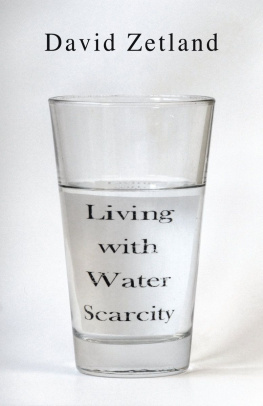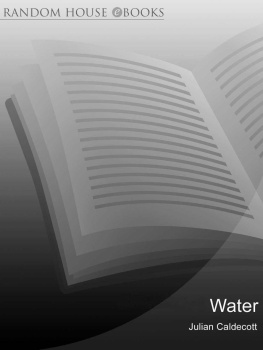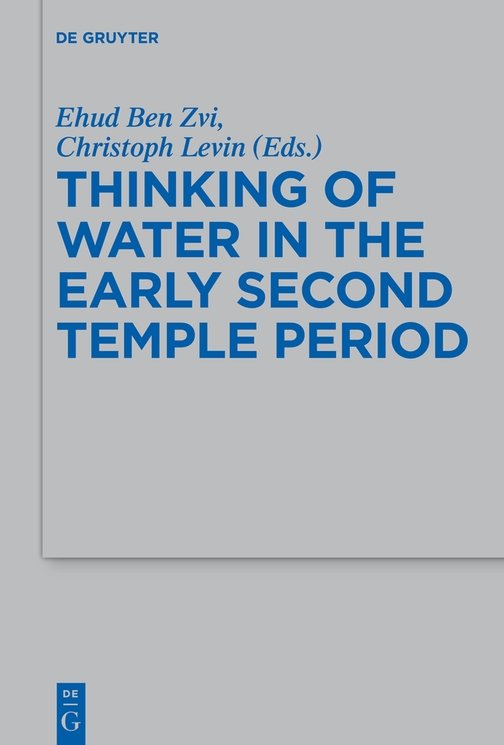1. Introduction
Water was, of course, vital to the existence of the community in Judah during the late Persian/early Hellenistic period in very practical terms. In fact, water is vital to the existence of any human community or even to most eco-systems anywhere and anytime, both directly and indirectly. Precisely because water is a vital resource and is widely acknowledged as such, because it is experienced by all, and directly and indirectly touches most aspects of human and community life, water often develops into a very important ideological and linguistic symbol that stands for and evokes central concepts (or networks of concepts). To be sure, these concepts, and even the symbolic values socially assigned to water, may vary from group to group and are historically dependent. This being the case, the study of water itself, that is, of what water may stand for in a particular community and of the roles played by thinking of water in such a community is likely to shape a pathway leading to a better understanding of matters that are important to that community and to its social mindscape in general.
Since every member of the community interacts with water at multiple levels (both in the literal and seemingly less literal, or symbolic, meaning of the term), one is to expect that within the discourse of the community, water will carry numerous associations. To be sure, not all of these associations are equally important for the reconstruction of the social mindscape of the community; there are obvious issues of mindshare. For instance, in Canada, water is more likely to evoke and stand symbolically for wilderness, purity, glaciers and rivers, or conversely, in particular settings, for pollution, eco-degradation and the like. It is far less likely that the first associations a person in Canada would come up with after hearing or reading the term water would be those conveyed by expressions such as treading water and does not hold water, even if these are widely used expressions.
In our case, it is my contention that one may learn much about the social mindscape of the community in Yehud by exploring thinking of water and concepts expressed through references to water within the symbolic system of the late Persian/early Hellenistic period. From a methodological perspective, two somewhat related approaches seem to me to hold much promise as heuristic tools for exploring these matters.
The first approach is an analysis of the main sets of social memories that were embodied in central water sites of memory. For example, one may explore particular rivers, chief among them the Jordan, but also Edenic rivers and other mnemonically important rivers such as the Euphrates and the Wadi of Egypt. One may also explore seas, such as the Reed Sea, or the Eastern Mediterranean Sea, which is, among others, the sea of Jonah and the sailors adventures. One may also explore memories of the flood, particular springs as sites of memory (e.g., the Gihon) and other mnemonic water sites. These may evoke particular eventse.g., the presence or absence of rain or dewor certain locations or water bodiese.g., wells, pools.
If one proceeds in this way, one is to look at central areas of conceptual overlap in the messages conveyed by water in these sites of memory and then advance general considerations about water and how water contributed to the shaping and re-shaping of these sites of memory. Given my own general approaches to the reconstruction of the social mindscape of the community and my research focus on social memory in ancient Israel, this is the approach that I would usually take to deal with these matters. This approach has much to commend it, and I am glad that other contributors to this volume are taking it, in one way or another. There is one minor caveat though: this approach is somewhat systemically weighed down by the fact that it does not focus directly on water per se or thinking of water, but on particular mnemonic places or events. This problem can be dealt with, but requires attention.
A complementary approach for understanding water and thinking of water within the social mindscape of the community is to look at the use of water in metaphors as part of the common way in which the community formulated, reformulated and expressed concepts. To be sure, this endeavour assumes an approach to metaphor according to which metaphors are categorical, class-inclusion assertions and in which the vehicle (here, water) is meant to exemplify a cognitive, readily available conceptual category and serves to frame a blended conceptual space that includes both the topic and the vehicle of the metaphor.
To explore the matters mentioned above within this research path, one has to look at the main categories formulated, expressed, represented and exemplified by water in particular texts within the discourse of the community and at some of the mentioned blended spaces. Such an analysis would serve as a starting point for exploring the main features and significations that water evoked and even the semantic or pragmatic (depending on ones definition of these two terms) meanings of water within the community. In turn, given that water was communally acknowledged as vital, such considerations are likely to shed light on what the community considered to be very important, as well as on the roles that thinking of water may have played in the community.
In either case, whether one studies memories or metaphors involving water (and at times the boundaries are clearly porous), one should explore the discursive, underlying grammar that made the use of water in these particular ways possible. The same holds true for exploring the ways in which water participated in integrated networks of meaning and in the formulation and expression of concepts, without which water itself would lose its ability to convey (and facilitate the construction of) meaning within the community. Only such an approach may help us to reconstruct what water meant and evoked, that is, to reconstruct the water that existed within the general social mindscape of the relevant communities and the social and cognitive roles associated with thinking of water.
Even a preliminary survey of all these issues as they relate to late Persian/early Hellenistic Judah (or its literati whose world was shaped and reflected in their central textual repertoire) stands beyond the scope of this or any paper. Thus, choices have to be made. My choice here is to focus on some metaphors and the conceptual categories that they evoked so as to illustrate how they may relate to conceptual networks, social memories and generative grammars, and in order that we may gain insights as to what thinking of water involved.
For the present purposes and given the practical constrains on any essay, I have decided to deal with only s ome of the conceptual sets shaped by and around associations with water. Water simply appears, directly or indirectly, in far too many metaphors within the textual repertoire of the period. It is impossible to deal with them all in one paper, or even a collection of papers.
Before going ahead, a final methodological consideration must be stressed, namely the differentiation between topic and vehicle. To state that YHWH is water is neither semantically nor pragmatically necessarily the same as to state that water is YHWH.
2. Thinking of Water: Water and YHWH
Ancient readers of Jer 2:13 learned through their reading of a godly text that YHWH is 

